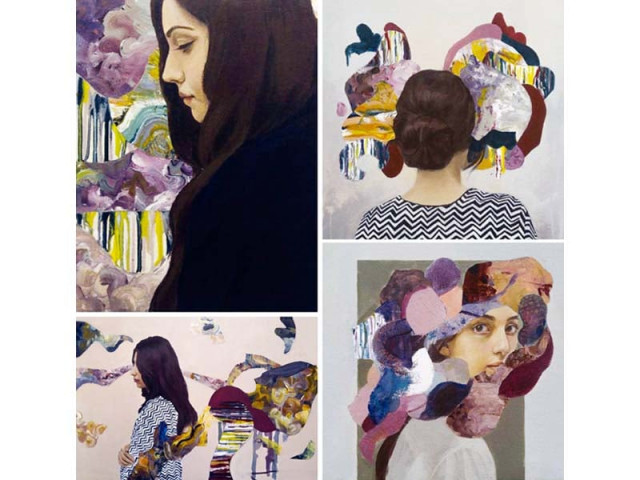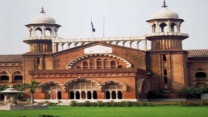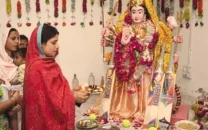On canvas: Natural growth inspires ‘Epiphany’ exhibition
Show featuring works of Lahore-based artists will run till April 21.

PHOTO: EXPRESS
Artist and illustrator Namrah Naseer’s work is inspired by the idea of natural growth and the development of human nature. Questioning the notions of composition, the artist merges realistic figures with sporadic mark making.
Speaking about her inspiration process, Namrah said: “We often come across a multitude of things that are more complex than we are really able to understand. Therefore, being alive means acknowledging the seen and at times having to trust in the unseen.”
The artist added that she approached her paintings with a similar sense of development and formation; constantly trying to reinterpret what the images mean within a shifting world dialogue. “As I interweave realistic figures and sporadic mark-making, the painting takes on an unexpected yet natural evolution and movement,” she explained.
“Resulting images reflect self-discovery, slow growth and realisation of oneself since we are constantly learning and changing, influenced by everything around us,” she added.
Illustrator and conceptual artist Iqra Ayaz’s work revolves around identity crisis and the question of “what we are”. The artist experimented in various mediums to express her ideas. In her latest work series, she created installations and sculptors of digital arts and mixed media.
According to Iqra, her work stems from the concept of how we perceive ourselves. “All life is attached with the soil, whether it is vegetation, flowers or human beings, through this intangible but inevitable emotional linkage. I have expressed this linkage with dust through metaphorically placed placenta, connecting human being with the mother earth, where the earth symbolises eternal womb,” she elaborated.
Iqra, in her work, has advocated dust and mud or ‘matti’ as the origin and the ultimate end of human life. “The nature and characteristics of matti have been used to carry various ideologies and philosophies of life in literature and poverty, especially in the mystic expression of our land,” she added.
She added that her work denotes the eternity involved with the dust.
Imran Ali Kazmi’s work, meanwhile, is related to understanding himself in relation to the local tradition. For this, he uses different mediums to express ritual values, but oil on canvas remains his favourite art form.
Imran said that in his series of work, he picked out certain things from traditional dressing and culture which had long been forgotten in the ever-changing fashions and lifestyles of today.
“I hope to bring back attention to traditional beauty and ornamentation,” he added.
Published in The Express Tribune, April 21st, 2017.



















COMMENTS
Comments are moderated and generally will be posted if they are on-topic and not abusive.
For more information, please see our Comments FAQ